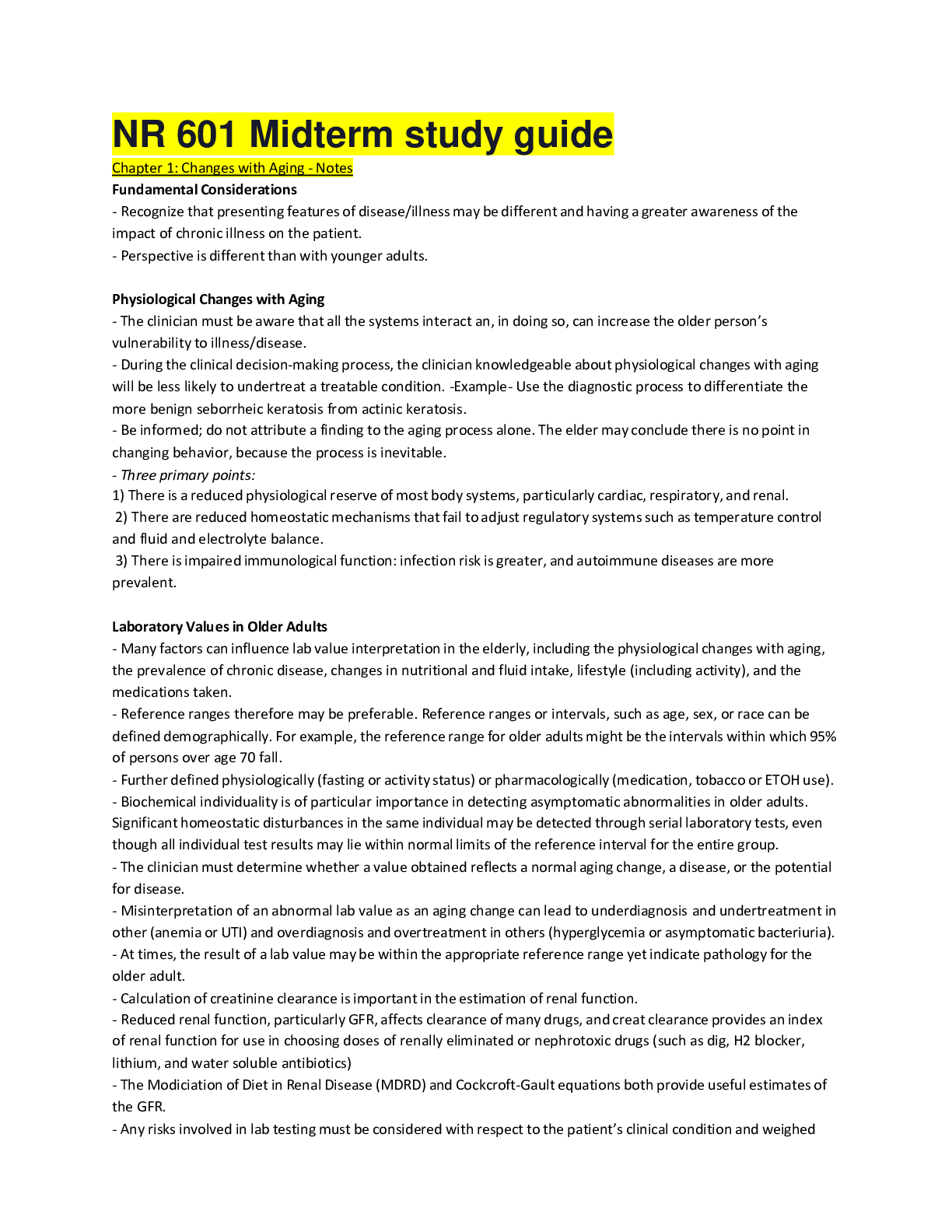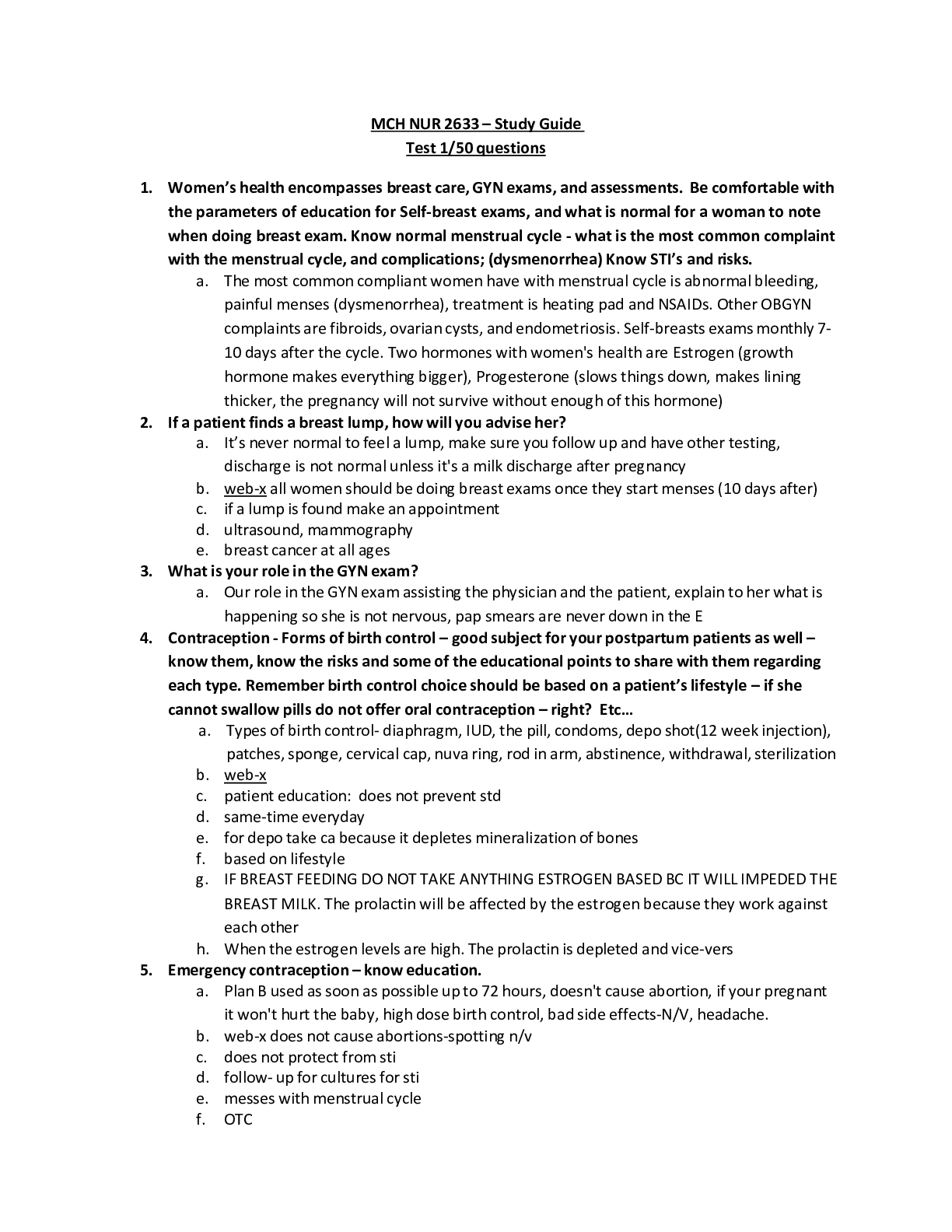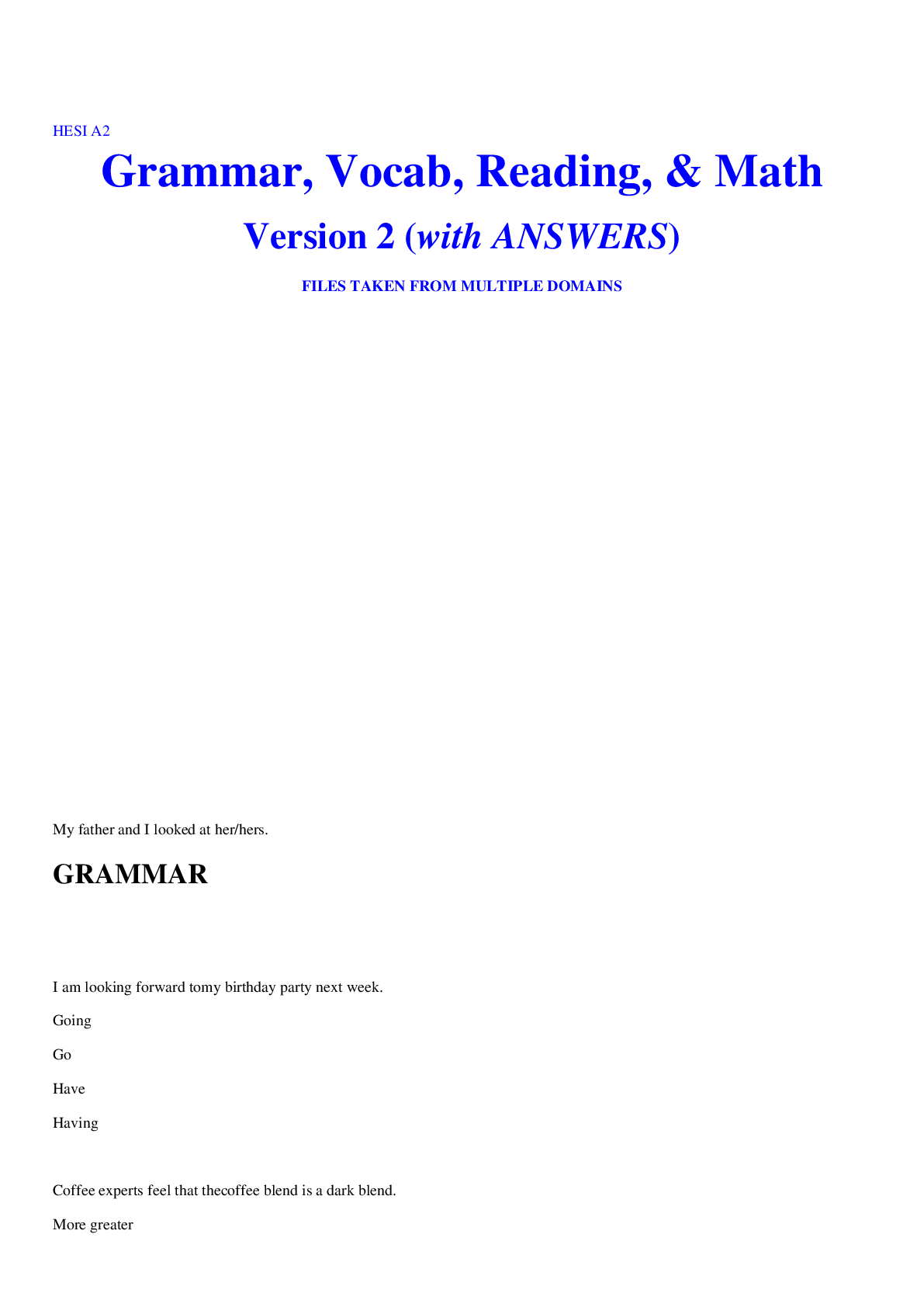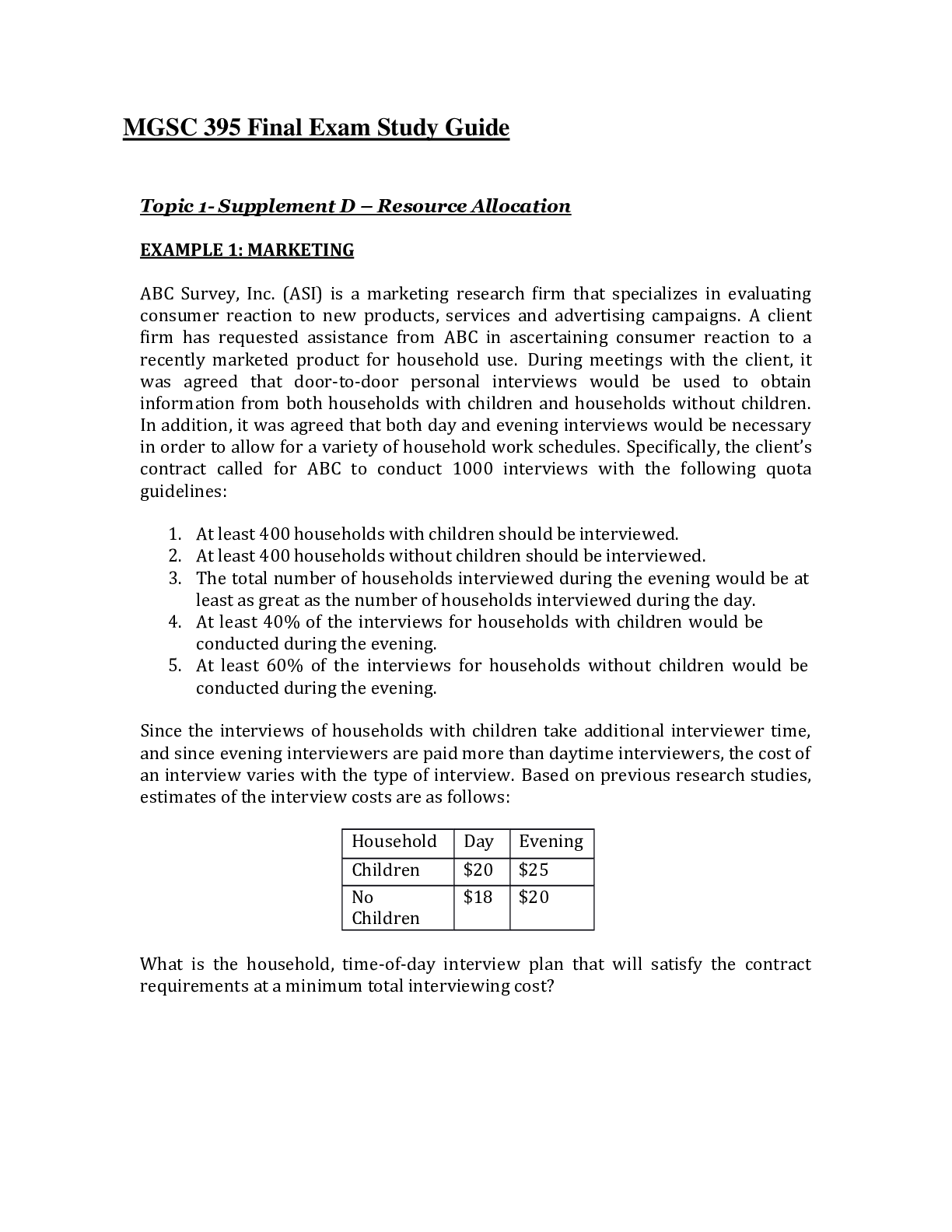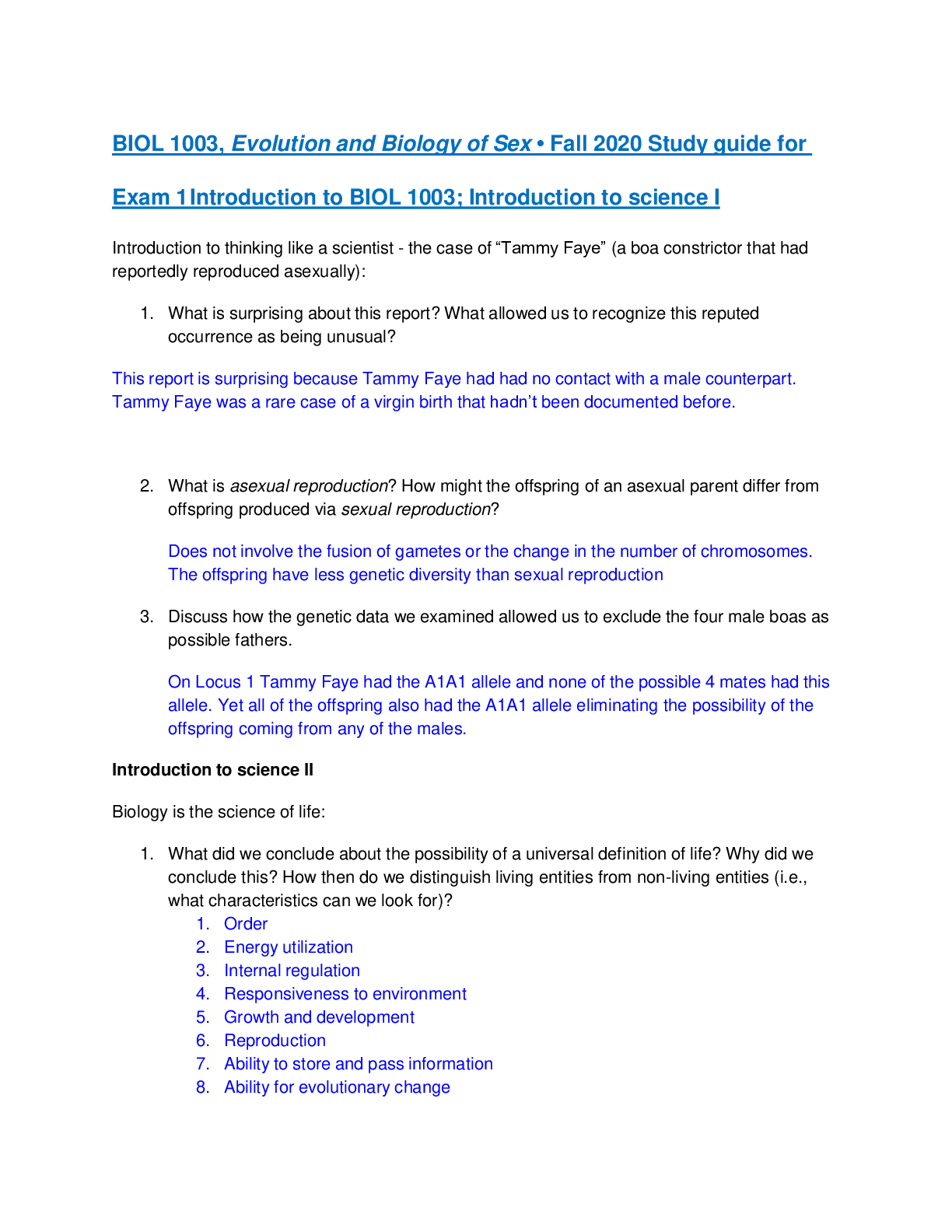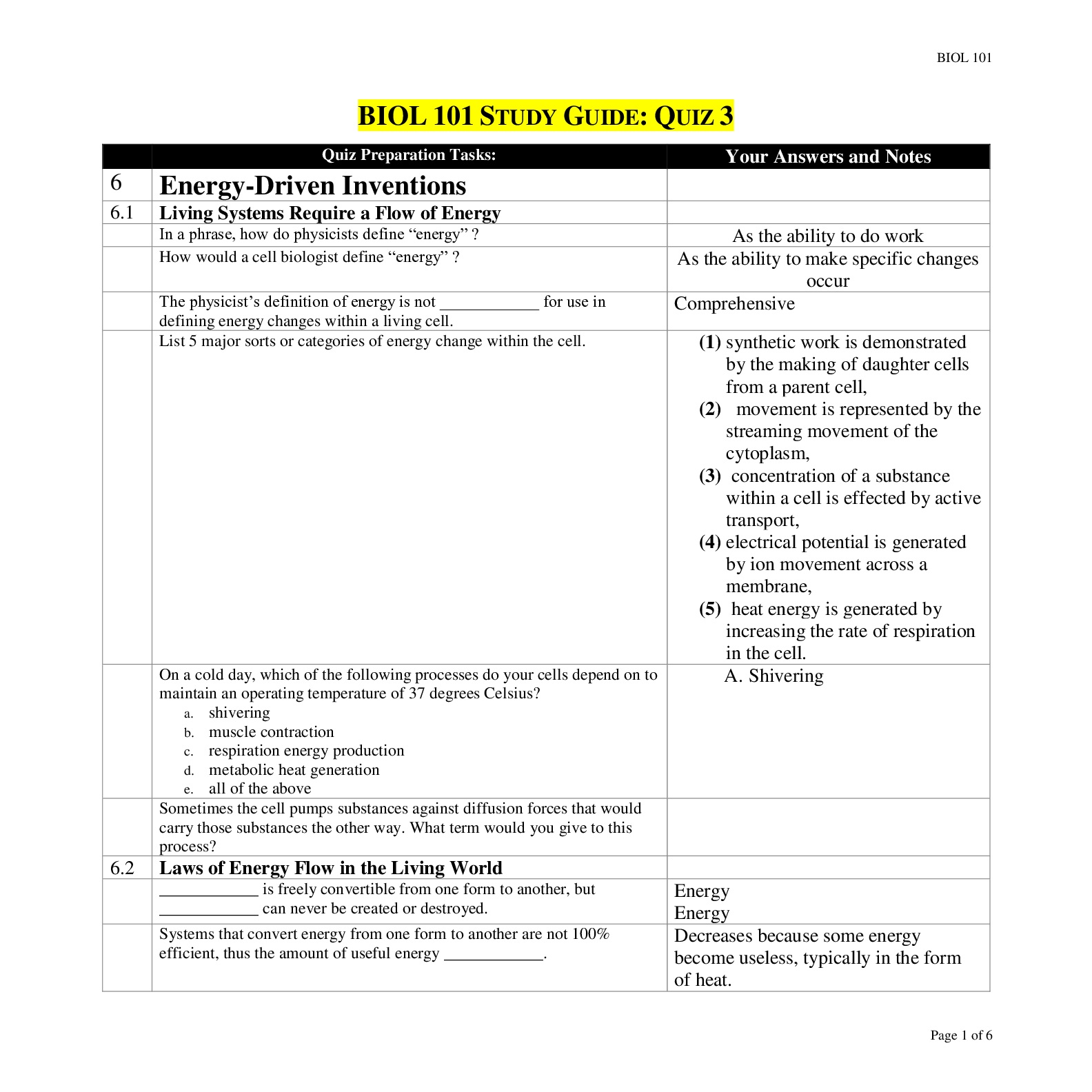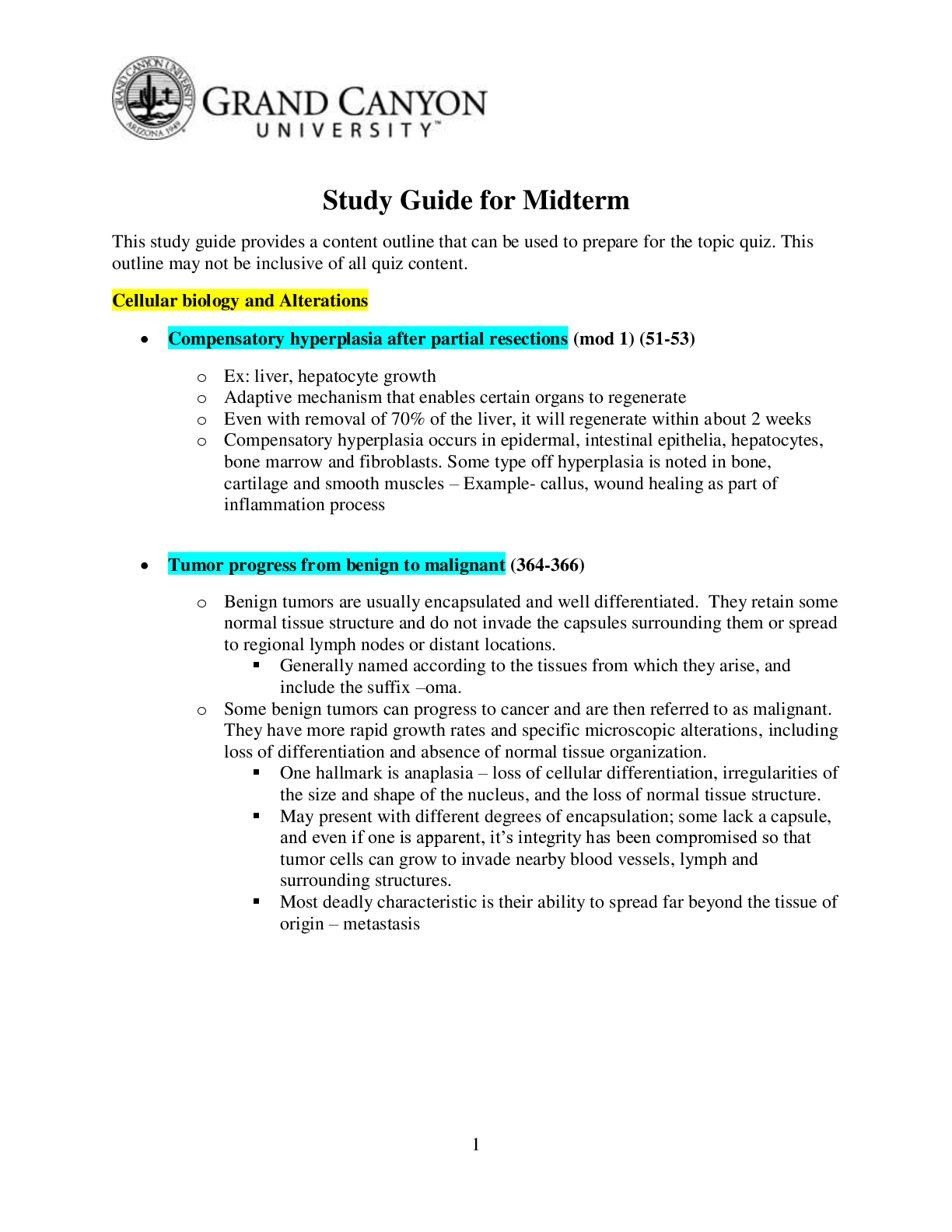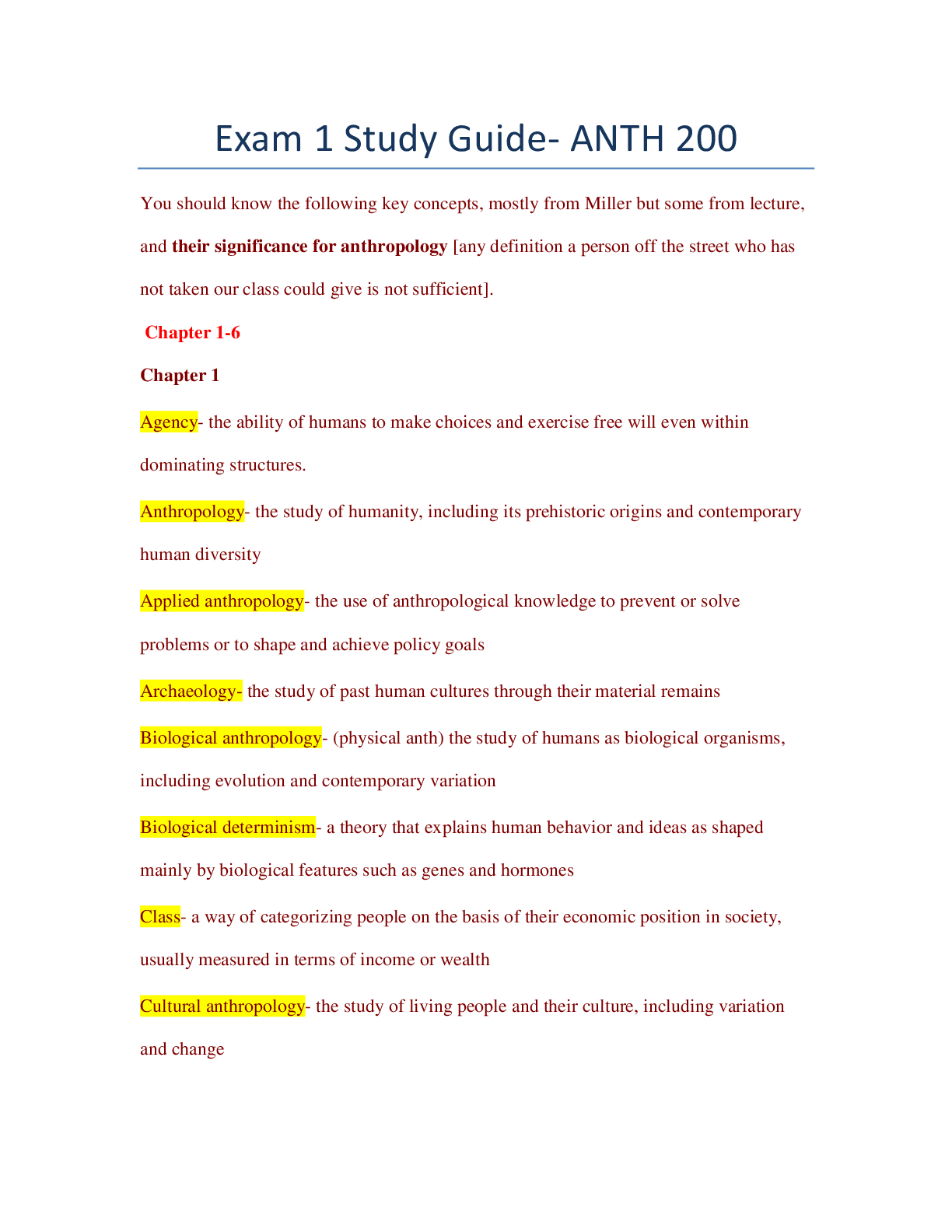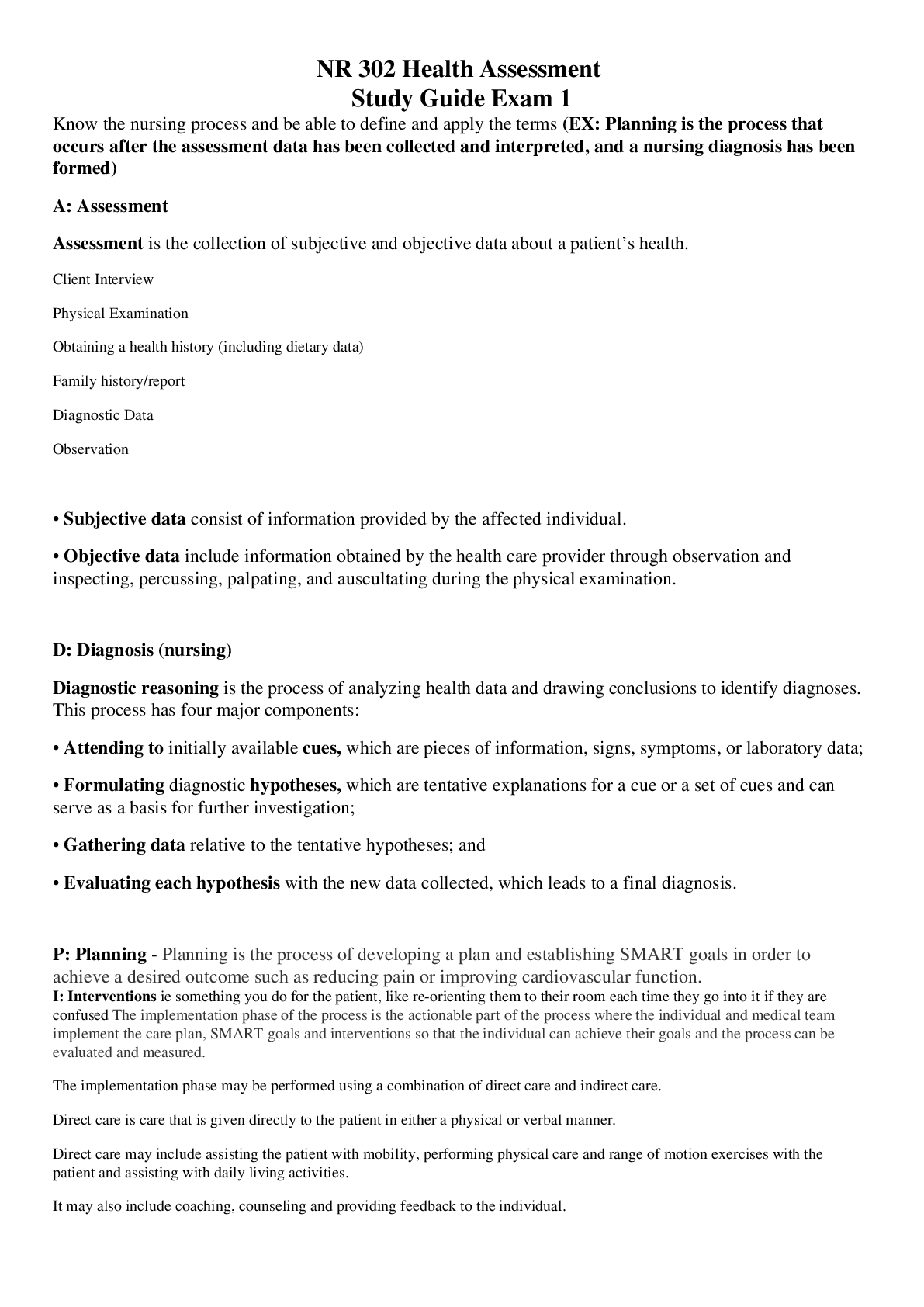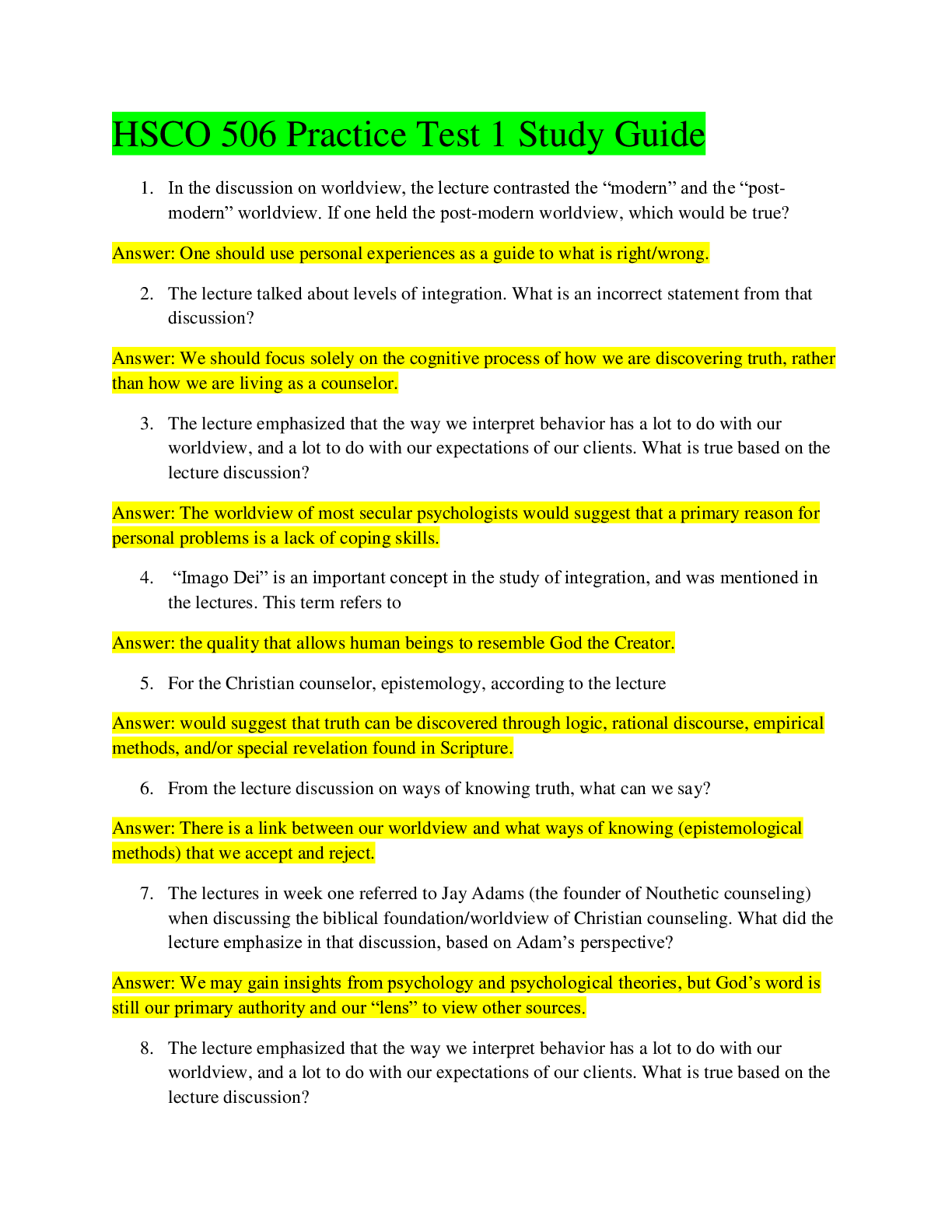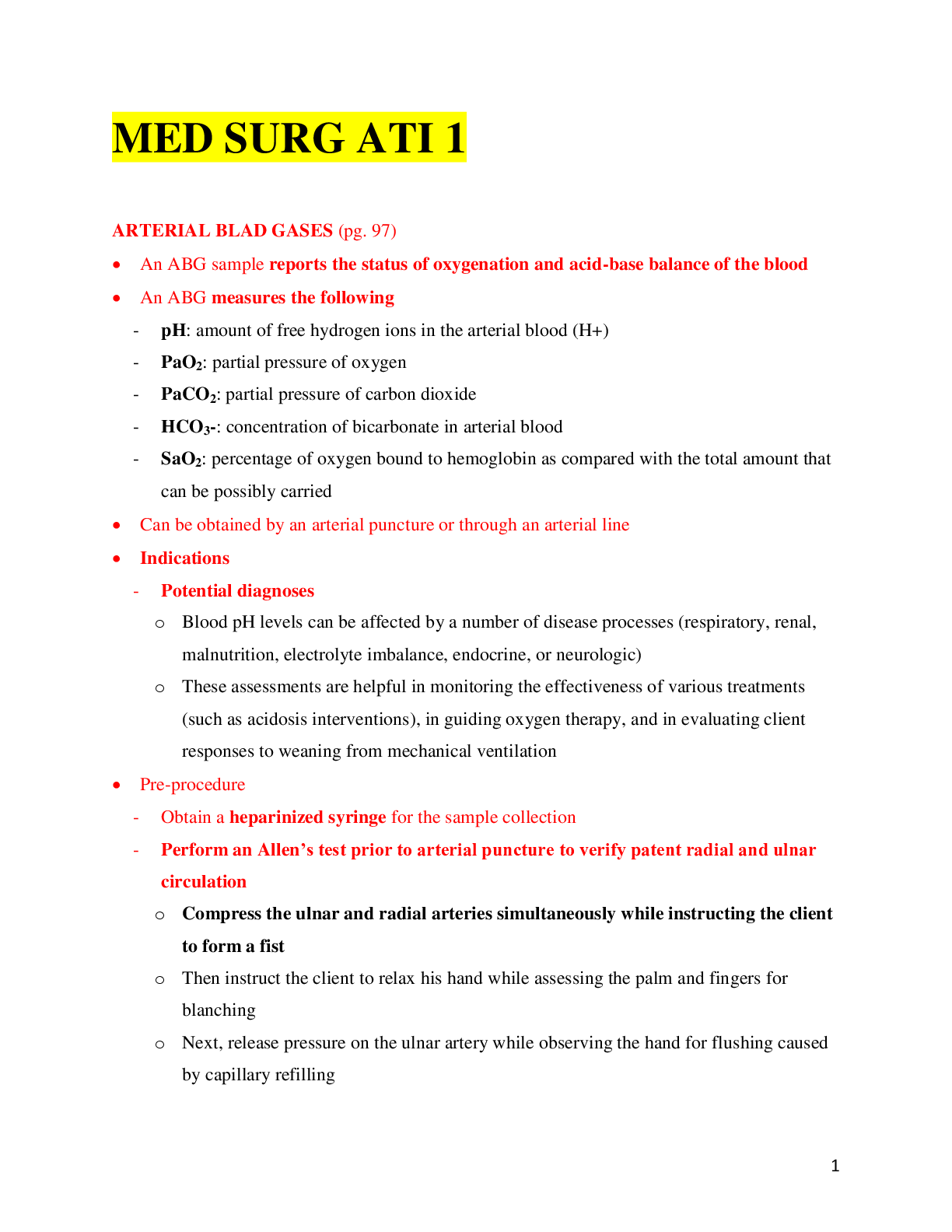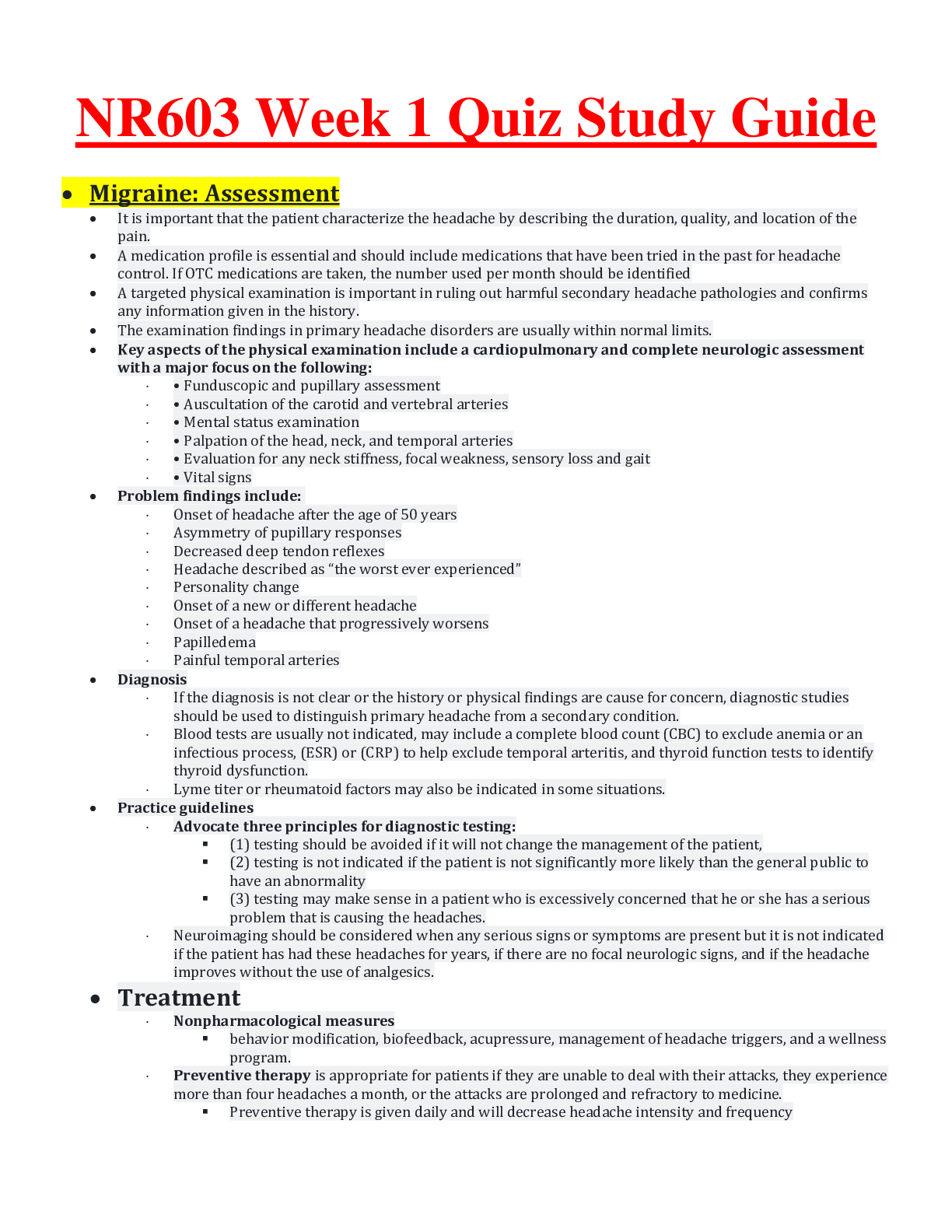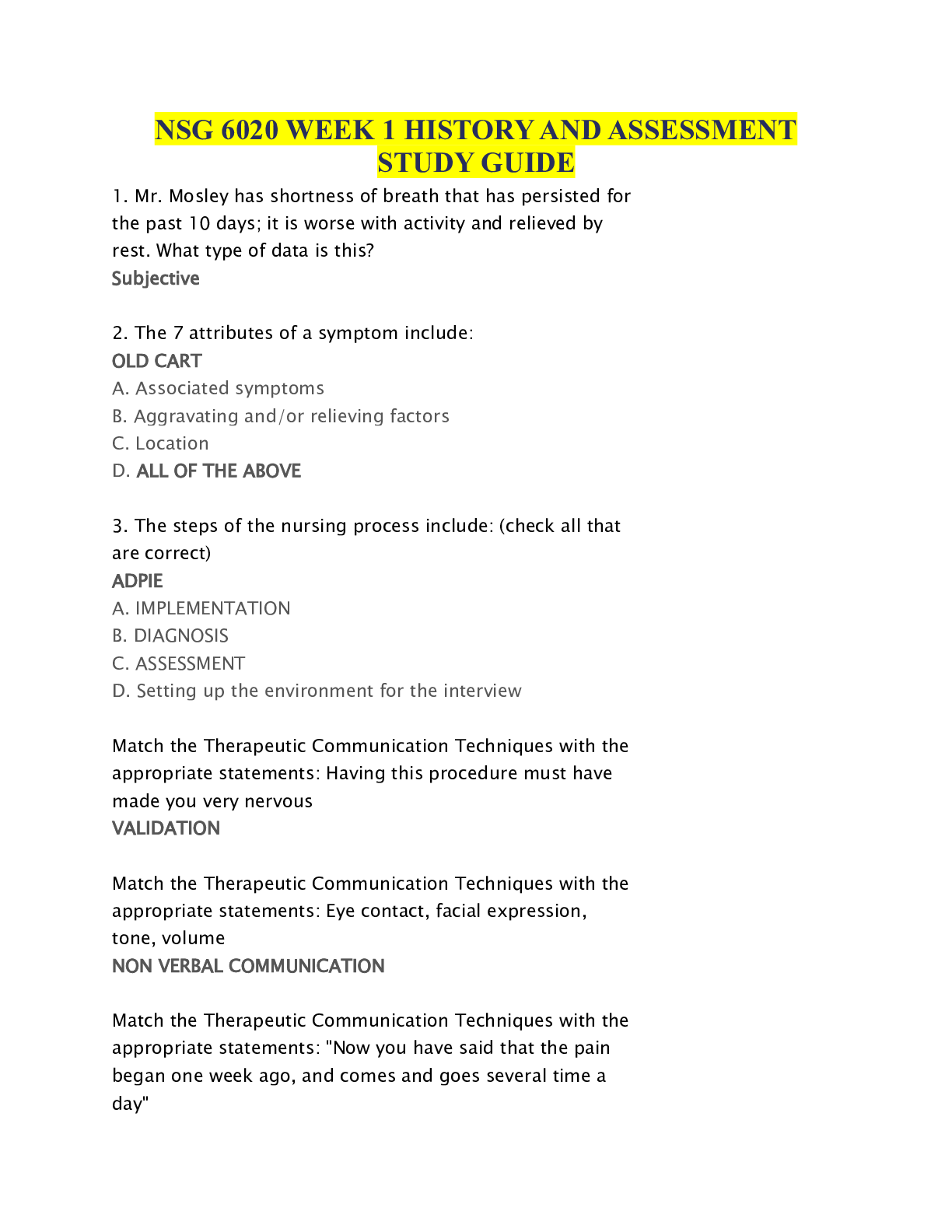*NURSING > STUDY GUIDE > NR-341 Exam 1 Study Guide primary (All)
NR-341 Exam 1 Study Guide primary
Document Content and Description Below
• Diagnostic Tests Acute respiratory failure o ABGs, Chest x-rays, CT, pulmonary function tests, end tidal CO2 monitoring, bronchoscopy. • Assessments o Lung sounds, work of breathing, u... se of accessory muscles, chest expansion, nasal flaring, respiratory rate, pulse ox • Interventions o Ineffective airway clearance reposition patient o ARF ▪ Causes: pulmonary edema, atelectasis, pneumonia, COPD, asthma, ARDS, thoracic, spinal or head injuries, drug overdose, neuromuscular disorders ▪ Type 1 - hypoxemic or oxygenation failure • PAO2 less th • an 60 MMHG o Normal PaO2 = 80 - 100 • Hypoventilation o Hyperventilation causes further issues when trying to correct this • Intrapulmonary shunting o Blood did not get oxygenated and dispersed to rest of body system o Blood that is shunted from the right side of the heart to the left without oxygenation. o Based on rate ventilation and perfusion: Rate of ventilation= rate of perfusion; ratio of VQ = 1 o Based on amount of ventilation and perfusion: ▪ Normal ventilation (V) IS 4 L/MIN ▪ Normal perfusion (Q) IS 5L/Min ▪ Normal V/Q Ratio IS 4/5 or 0.8 ▪ VQ scan patient must lie for 30 minutes o Tissue hypoxia anaerobic metabolism and lactic acidosis o Normal Cardiac output ▪ 600 – 1000 ML/MIN of O2 ▪ Low cardiac output decrease O2 blood to tissues anaerobic metabolism production of lactic acid metabolic acidosis ▪ Type 2 - hypercapnic or ventilator failure • PACO2 > 50 MM HG • Increase in PaCO2 (hypercapnia) due to decrease O2 in body and CO2 can be blown off • Increase in ventilation excess CO2 blown off (hypocapnia) • VQ mismatch not 1:1 ▪ Assessment of respirator failure: most common hypoxemia restlessness ▪ Medical management: O2, bronchodilators, corticosteroids, ventilators, transfusion, nutritional support, hemodynamic monitoring ▪ HGB 12- 16 • Anemic is less than 8 HGB o Respiratory failure causes ▪ Failure to ventilate ▪ Failure to oxygenate ▪ Failure to protect airway Acute Respiratory Distress Syndrome (ARDS) • Noncardiogenic pulmonary edema- pulmonary edema not caused by a cardiac problem. • Diagnostic criteria o 1. PaO2/FiO2(decimal) ratio of less than 200 – PaO2 divided by Fi02 … 100 divided 21 = ▪ Optimal Ratio 476.19 ▪ ***Decreasing PA02 levels despite increased FIO2 administration o 2. Bilateral infiltrates not explained by something else. (Normally air should be black, you will see white puffy stuff all over if you have this) • Risk Factors. 4 Factors o Sepsis #1*** o Pneumonia o Trauma o Aspiration of Gastric contents ............................CONTINUED.......................... [Show More]
Last updated: 1 year ago
Preview 1 out of 28 pages
Instant download
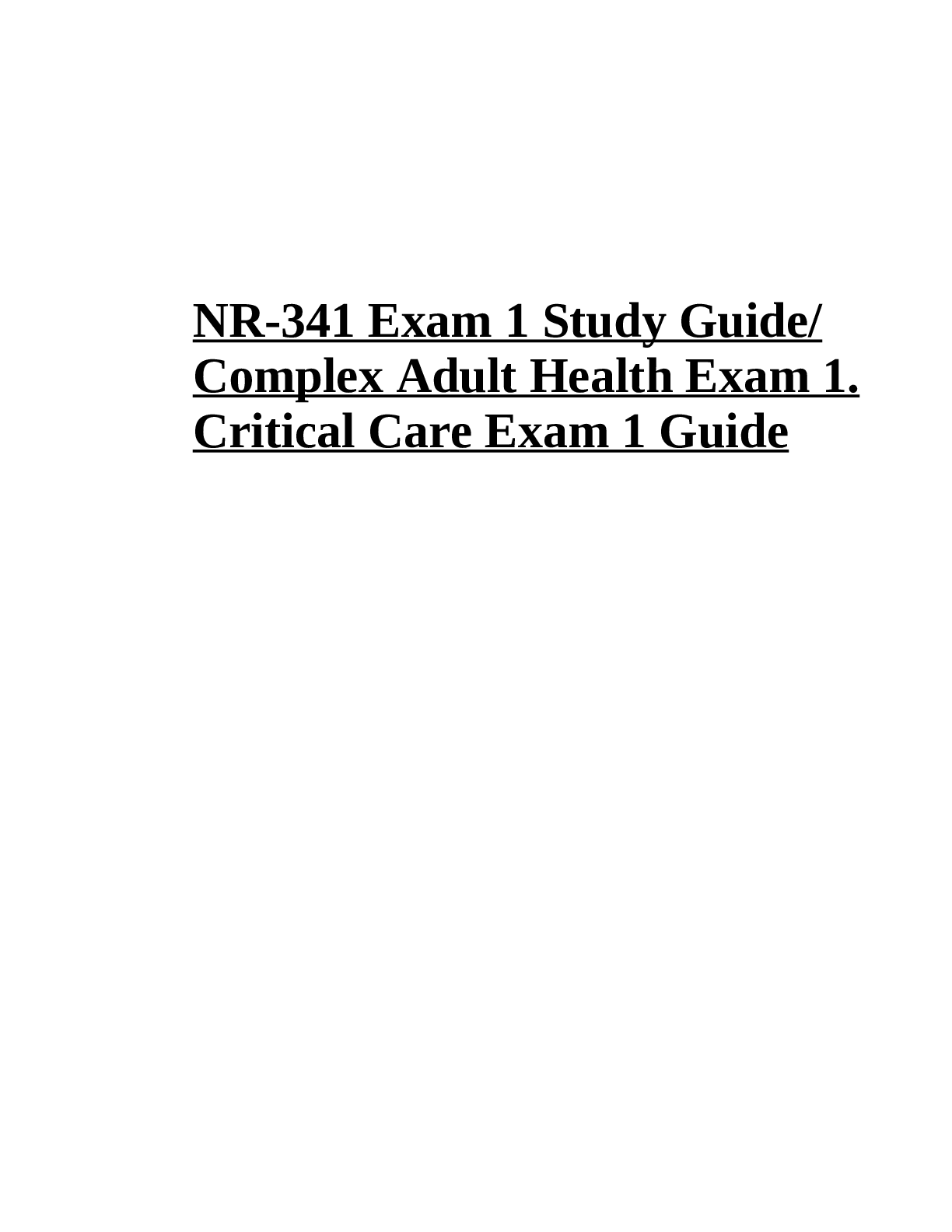
Buy this document to get the full access instantly
Instant Download Access after purchase
Add to cartInstant download
Reviews( 0 )
Document information
Connected school, study & course
About the document
Uploaded On
May 21, 2021
Number of pages
28
Written in
Additional information
This document has been written for:
Uploaded
May 21, 2021
Downloads
0
Views
101

